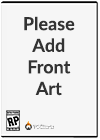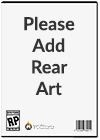Existing User Log In
New User Registration
Register for a free account to gain full access to the VGChartz Network and join our thriving community.





No Boxart


No Boxart

Kramer&Kramer Software
Puzzle
 (Add Date)
(Add Date) (Add Date)
(Add Date) (Add Date)
(Add Date)
| Owners: | 0 |
| Favorite: | 0 |
| Tracked: | 0 |
| Wishlist: | 0 |
| Now Playing: | 0 |
Maze Tesseract is a true 4-dimensional Maze Game; a logic and spatial challenge played in a 4D hypercube tesseract. It contains 1200 mazes. You see your location in the Maze Tesseract on two 2-dimensional orthographic projections of the 4D hypercube. The fourth dimension is now color-coded.
Maze Tesseract (full version) Version 4.3.1
Copyright 2009, 2010, 2011 by Peter B. Kramer. All rights reserved.
2009, 2010, 2011 by Peter B. Kramer. All rights reserved.
Developed by Kramer&Kramer Software
* 1200 mazes
* Easy 2x2x2x2 mazes to very hard 7x7x7x7 mazes
* Touch and drag to move - fast smooth action
* Fourth dimension color-coded
* Breadcrumb markers
* Show Best Move feature
* Show Portals feature
* Time and Moves indicators
* Sound on moving
* Walls can become porous to explore the Tesseract
You start at one corner on the top level of a Maze Tesseract (the green 'Start' location in the Graphic) and you have to move to the opposite corner on the bottom level of the Maze Tesseract (the light blue 'Finish' location in the Graphic). You will see your 'Current Position' in the Maze Tesseract (the blue location in the Graphic), and the walls of the Maze Tesseract, but you can't see all of the locations in the Maze Tesseract at one time. Instead, you will only see two 2-dimensional slices through the 4-dimensional Maze Tesseract.
What is a tesseract? It is a 4-dimensional hypercube. As a square is to a line, or as a cube is to a square, a tesseract is to a cube. A position within a tesseract can be described by showing its location along the 4 different dimensions of the tesseract. This location can be displayed on a 2-dimensional screen by projecting the tesseract into two orthogonal 2-dimensional slices, a multi-dimensional ‘orthographic projection’, just as a position in a cube can be displayed by projecting the cube into a horizontal slice and a vertical column. The tesseract itself can be imagined to be a cube that changes with a fourth dimension. That fourth dimension might be considered ‘color’ as indicated in the Graphic. The source of each dimension’s orthographic projection can be seen in the Maze Tesseract in the Graphic by following each of the blue lines from the two 2-dimensional orthographic representation of the tesseract back to the multiple colored cubes that represent the 4-dimensional Maze Tesseract. Alternatively, the 4 dimensions of the two 2-dimensional squares on the iPhone display can be considered independent orthogonal dimensions of an abstract 4-dimensional hypercube.
Maze Tesseracts can have from 2 to 7 tesseracts on each edge and can have one of two difficulty levels, Standard or Complex. There are 100 mazes of each size and difficulty level, a total of 1200 mazes.
Source: http://itunes.apple.com/us/app/maze-tesseract/id354914205?mt=8